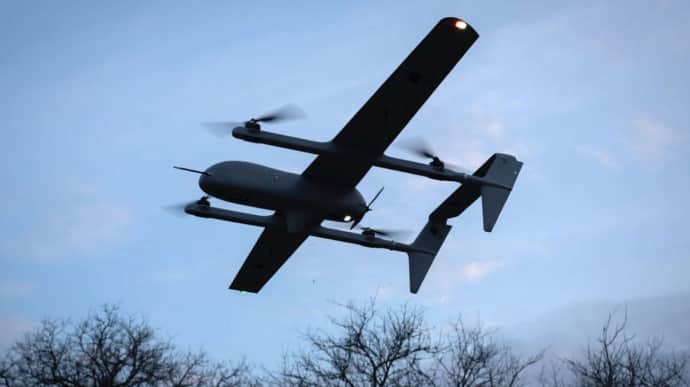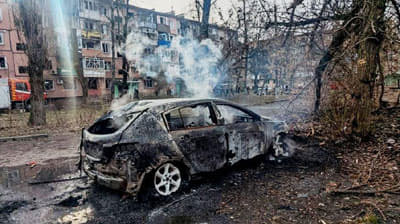About 30% of Russia's nuclear arsenal within range of Ukrainian drones and missiles – Foreign Affairs

Around 30% of Russia’s nuclear arsenal, which consists of approximately 5,580 warheads, is within range of Ukrainian drones and missiles.
Source: an article in Foreign Affairs titled "How the war in Ukraine could go nuclear – by accident"
Quote: "Because Ukrainian drone assaults have already reached as far as Moscow [...], it is clear that at least 14 Russian nuclear storage sites now fall within range of its drones. At least two of those sites are less than 100 miles from the Ukrainian border, well within striking range of the more damaging missiles Ukraine already possesses, and another five sites lie less than 200 miles from the border, close to or just beyond the range of the advanced Western-provided missiles that Ukraine is seeking permission to use against conventional targets in Russia."
Details: The author of the article notes that there are no signs that Ukrainian forces are intentionally targeting nuclear warhead storage sites. However, it is the Russian government’s responsibility to move its nuclear warheads out of the way of danger.
Quote: "Russia knows that its warheads should not be positioned anywhere near conventional military operations: after Ukraine launched its first drone and missile attacks against Belgorod in the spring of 2023, Russia quickly reported that its Belgorod storage site was no longer storing nuclear warheads – acknowledging that warheads should not be stored anywhere near active fighting. But remarkably, there have been no Russian announcements about the status of the warheads it has at any of its other storage sites."
The author suggests several possible explanations for this:
- Russian leader Vladimir Putin may believe that relocating the country’s nuclear warheads would be seen as a sign of weakness.
- The Russian leadership may be unaware of the risks posed by these warheads.
- The Russian military may fear that the West would misinterpret the relocation of warheads as preparation for a nuclear attack, potentially leading to a preemptive strike by NATO.
Quote: "The possibility that a Ukrainian drone or missile will strike a warhead and create an explosion that distributes fissile material is already a major risk. But it is not the only one. Even more dangerous is the possibility that a Ukrainian missile strike or territorial takeover could throw a storage site into operational chaos, allowing rogue actors to seize its nuclear warheads – or inadvertently prompt Russian nuclear escalation."
The author underscores that Russia "breached a sacred tenet of nuclear security by launching attacks against Ukraine from military bases that store nuclear warheads, thus making those bases a legitimate target for counteroffensives".
He points out that since March 2022, Russia has been using the Engels-2 airbase to launch strikes on Ukraine with Kinzhal missiles, which are capable of carrying nuclear warheads. The author believes that "there are probably dozens of nuclear warheads stored less than four miles from the Engels-2 base’s main airfields".
Russia is also thought to store dozens of nuclear warheads for short-range aircraft at the Yeysk and Morozovsk airbases. All of these airbases are known to have been attacked by Ukrainian forces multiple times.
Foreign Affairs notes that a strike on a storage site would not in itself cause a nuclear explosion of the warheads.
The threat arises when a warhead is outside a bunker – such as during transportation for maintenance within a storage site or at a rail transfer point.
"But perhaps the greatest danger now posed by Russia’s nuclear weapons storage sites is the one that was originally envisioned after the Cold War’s end: that is, the danger that warheads could be seized by a small, rogue group of fighters. Russia still faces internal threats including terrorists, separatists, and the thousands of former Wagner fighters now scattered across Russia and Belarus. Its actions in Ukraine have greatly exacerbated the danger posed by these long-standing threats," the article concludes.
Support UP or become our patron!





